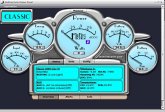Mr.Michael
New Member
- Joined
- Feb 2, 2020
- Messages
- 40
Since the MPPT controller knows when the battery is full and knows the load on the battery it seems like simple math as long as either the capacity is set correctly or figured out after a few cycles. The controller can even reset by itself to 100% after full charge is achieved. The only unknown is if you happen to have a load directly connected to the battery, like an inverter. I set the capacity on my Rich Solar MPPT to match my battery but the controller seems not to care. I would assume the Renogy MPPT behaves identical as those seem to be close cousins, same software works on both and same BT module as well.
Does anyone make a MPPT controller that keeps track of in vs out and shows an approximate SOC?
Does anyone make a MPPT controller that keeps track of in vs out and shows an approximate SOC?
Last edited:




